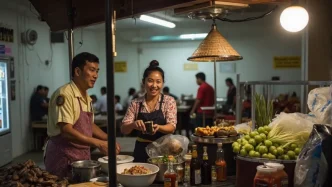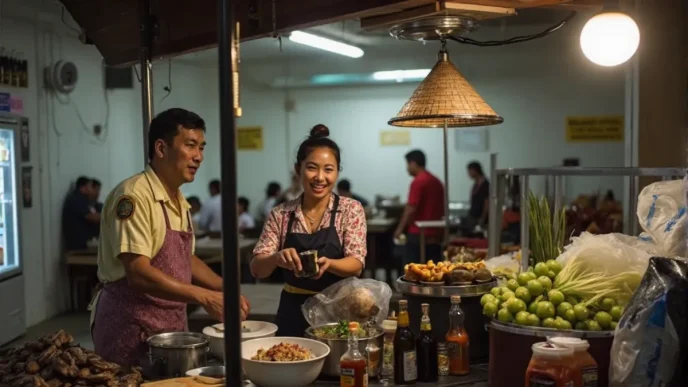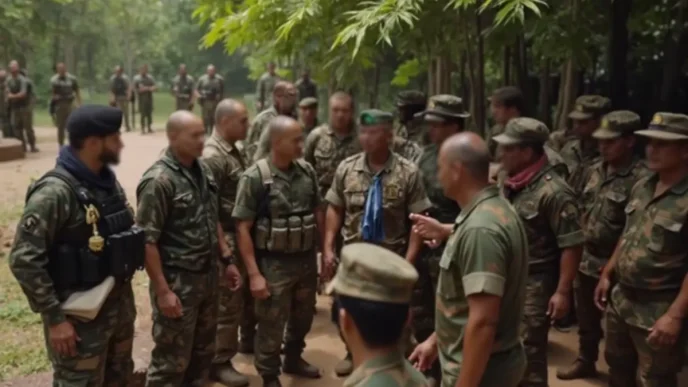Rescue operations are racing against time in Bangkok, where a devastating collapse of the under-construction State Audit Office (SAO) building has left dozens trapped and a confirmed death toll of 14 as of April 2, 2025. The disaster, triggered by a powerful 8.2-magnitude earthquake centered near Mandalay, Myanmar, approximately 392 kilometers from Thailand’s Mae Hong Son province, has compounded a regional crisis, with thousands affected across borders. As teams deploy heavy machinery and international support pours in, the challenges of incomplete blueprints and structural obstacles are hampering efforts to save lives believed to be trapped between floors 17 and 21.
Desperate Search for Survivors
In the heart of Bangkok, the wreckage of the SAO building stands as a grim reminder of the earthquake’s far-reaching impact. Authorities estimate that over 70 individuals or bodies remain trapped beneath the rubble, with scanning technology detecting human shapes but unable to pinpoint their exact depth under the concrete. Bin Bunluerit, an actor and official with the Ruamkatanyu Foundation, emphasized the urgency of the situation, noting that most victims are likely located between floors 17 and 21. “The collapse happened during break time, just after lunch, when many workers were resting on those levels” he explained.
Rescue teams have recovered one body as recently as Monday, bringing the death toll to 14, while nine individuals are reported injured and 72 remain missing. The four-day operation has seen incremental progress, with heavy machinery now clearing concrete slabs and drilling equipment deployed to access deeper sections of the debris. Yet, hope persists among rescuers, who prioritize signs of life over body recovery when survivors are detected.
Structural and Strategic Challenges
The rescue mission faces significant hurdles, not least due to the absence of a complete blueprint for the under-construction building. Bin highlighted this as a major obstacle, explaining that without detailed plans, strategizing the approach to reach trapped individuals becomes exceedingly difficult. Additionally, the thick side walls of the structure have slowed progress, as they resist efforts to dig through and locate survivors or bodies.
Despite these challenges, coordination with international rescue teams has been seamless, according to Bin. Staff from the Ruamkatanyu Foundation, trained abroad in specialist techniques, are working alongside global partners to maximize efficiency. “When we detect signs of life, our priority shifts to saving those individuals before focusing on retrieval” he said, defending the pace of the operation amid growing public concern over the rising death toll.
Regional Impact of the Earthquake
The collapse in Bangkok is just one chapter in a broader regional tragedy unleashed by the 8.2-magnitude earthquake near Mandalay on Friday. The Myanmar government has reported a staggering toll of 2,719 deaths, 4,521 injuries, and 441 missing as of the latest updates. The United Nations has flagged critical shortages of water and medicine in affected areas, while international aid efforts are ramping up. Teams from the Philippines, Indonesia, India, and Laos have mobilized to assist, with initiatives like India’s Operation Brahma deploying army and National Disaster Response Force (NDRF) units alongside 12 tonnes of aid from Indonesia’s Defence Ministry.
In Thailand, the quake’s tremors have forced the suspension of operations at four government buildings in Bangkok, underscoring the structural vulnerabilities exposed by the disaster. Prime Minister Srettha Thavisin has ordered a strict investigation into the SAO building collapse, raising questions about construction standards, safety protocols, and oversight in a city often seen as a hub of rapid urban development.
Human Cost and Public Response
Beyond the numbers, the SAO collapse has struck a deep emotional chord in Thailand. Families of the missing wait anxiously for news, while stories of workers caught in the wrong place at the wrong time—resting during a routine break—highlight the randomness of the tragedy. Social media platforms like X have been flooded with expressions of grief and calls for accountability, with users questioning how such a disaster could unfold in a modern capital. Posts from local accounts also praise the resilience of rescue teams, whose tireless efforts continue despite the daunting odds.
The Thai government’s response has been swift, with promises of transparency in the investigation. Yet, public trust remains fragile, as past construction scandals in the region fuel skepticism about whether lessons will truly be learned. The lack of a blueprint, in particular, has sparked outrage among some observers, who argue that such oversight failures are inexcusable for a project of this scale.
Broader Implications for Urban Safety
The Bangkok collapse is a stark wake-up call for urban centers across Southeast Asia, where rapid development often outpaces regulatory enforcement. Earthquakes, while less frequent in Thailand compared to neighbors like Myanmar or Indonesia, pose a persistent threat, especially as cities expand vertically with high-rise constructions. Analysts point to the need for stricter building codes, regular safety audits, and contingency planning to mitigate the impact of natural disasters.
In the context of the Mandalay earthquake, the regional response also underscores the importance of cross-border cooperation. The swift deployment of aid and personnel from neighboring countries to Myanmar reflects a shared recognition of the interconnected risks in the region. However, it also highlights disparities in preparedness—while some nations have robust disaster response mechanisms, others, including parts of Thailand, appear caught off guard by the scale of secondary impacts like building collapses.
Looking Ahead: Challenges and Hope
As rescue operations in Bangkok press on, the dual focus remains on saving lives and understanding what went wrong. The investigation ordered by the Prime Minister could set a precedent for how Thailand addresses construction safety, potentially influencing policies across the region. For now, though, the immediate priority is the painstaking work of clearing rubble, with heavy machinery set to play a larger role in the coming days.
Amid the devastation, small glimmers of hope persist. Each sign of life detected beneath the concrete fuels the determination of rescuers, who know that every hour counts. For the families of the 72 still missing, and for a nation watching anxiously, the outcome of this operation will resonate far beyond the wreckage of the SAO building.














